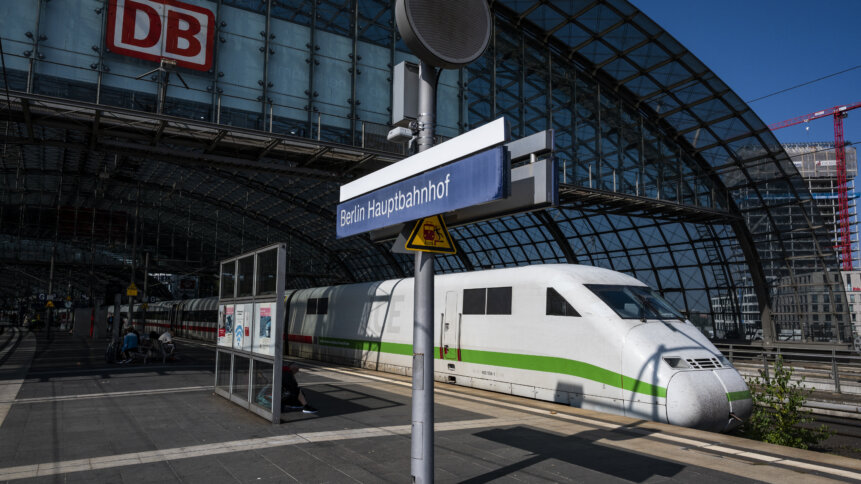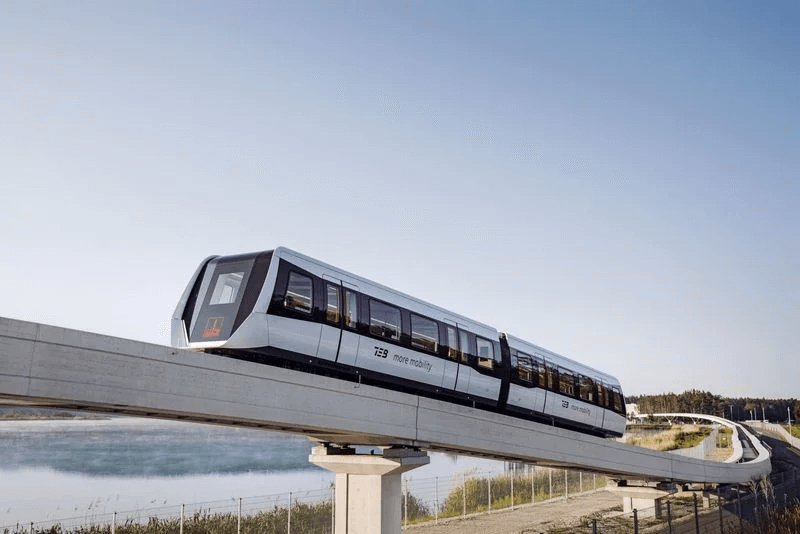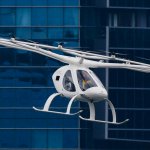Quantum algorithms, IIoT sensors on the fast track to improving railway systems

Railway systems around the world continue to innovate new technologies to improve their services. While trains have been upgraded to provide better comfort, more connectivity, and run at faster speeds, scheduling them to be dependably on time like clockwork is always the desired outcome for all train operators.
The European Travel Commission released a report stating that two-thirds of Europeans plan to travel between autumn and March 2022, with over half (55%) of them aiming to visit another European country. As such, demand for rail travel is also expected to see some increase, with travelers preferring shorter trips.
Now, train scheduling may sound simple — but with passenger footfall rising, the frequency of train rides needs to increase as well. And the only way train companies can understand how to enhance rail services, is by studying the data they have with them.
However at most times, the data may not be entirely accurate and unlikely to be in real-time. Today, train companies rely on real-time data and insights to make decisions on train schedules, for both long and short travel routes.
In Germany, Deutsche Bahn Netz AG (DB) is responsible for the rail infrastructure. DB is the service provider for currently 420 railway undertakings utilizing a route network covering nearly 33,300 km. The German railway network is the longest in all of Europe, making scheduling an important task.
To ensure prompt train scheduling, DB partnered with Cambridge Quantum (CQ) to explore how quantum computers can improve rail traffic as part of DB’s long-term transformative plan. This includes digitizing DB’s infrastructure and railway system using next-generation technologies to achieve a higher capacity and optimal utilization of the rail network.
Combining Cambridge Quantum’s latest combinatorial optimization algorithm Filtering Variational Quantum Eigensolver (F-VQE) with DB’s operations research expertise, the team re-optimized realistic train timetables after simulated delays, and are now identifying areas for continued study. This collaboration evidences how innovations in both quantum algorithms and domain-specific modeling can inform a long-term vision for a faster and greener transportation network.
“We are very excited to be working with Deutsche Bahn to explore and demonstrate the utility of today’s Noisy Intermediate Scale Quantum (“NISQ”) processors to solve real-world problems in the transport and logistics sector. Deutsche Bahn’s research and development efforts in this area are of critical importance, and we are confident that over time as quantum computers start to scale, our work with them will lead to a meaningful contribution towards a cleaner and greener future,” said Ilyas Khan, CEO of Cambridge Quantum,
Michael Küpper, lead of Capacity and Traffic Management Systems at Digitale Schiene Deutschland, says that “By working with Cambridge Quantum, we have fine-tuned our research and development plans and taken the first steps in defining a future quantum-advantaged train timetabling system. We are excited to continue working with Cambridge Quantum to address some of the key challenges and contribute to the rapidly evolving field of NISQ quantum algorithm research.”

(source – HIMA)
Securing railway systems
Train and Mass Rail Transit accidents are not in the public news quite as often as aviation accidents, even though serious deaths and injuries still do occur. For example, in Europe, there were 1 516 significant railway accidents, totaling 802 fatalities and 612 persons seriously injured in 2019. Another example is the rail disaster in Taiwan which left 49 dead and more than 200 injured happened because a construction vehicle left on neutral slid down onto the tracks and collided with the train as it emerged from the tunnel.
Such accidents, as well as other serious and minor lapses in rail operations and sustainability, are faced by rail operators and regulators around the world daily. The emergence of IIoT (Industrial Internet of things) and connected networks in rail systems, present cybersecurity vulnerabilities that can cripple rail networks.
According to Friedhelm Best, Vice President APAC for HIMA, a German industrial safety, and cybersecurity company, securing railway systems has got multiple parts of it. From a cybersecurity perspective, rail operators need to ensure their rail systems technology is patched and updated with the latest security protocols.
But apart from cybersecurity issues, railway systems have been looking to use technology not just for train operations but also for train maintenance. In the past, trains would be maintained and serviced based on a schedule over some time.
But this can also lead to unplanned breakdowns, something all train companies want to avoid. And now, with the help of sensors and data, train and rail network operators can get more insights for predictive analysis of the trains, enabling them to make repairs and reduce unplanned breakdowns.
“Unscheduled maintenance creates a lot of disruption and incurs more costs. Passengers also get disappointed, and goods are also delayed. In some cases, the train maintenance can be extended and rescheduled to avoid disruption during periods as well,” said Best.
He added the railway systems in Europe have different standards in different countries. With thousands of kilometers of rail track, some of the systems are over half a century old. Operators there need to deal with the legacy systems and migrate them to new technologies.
“HIMA has developed open safety controllers that any system integrator can integrate into their own safety solution. For end-customers and integrators, this means you make yourself independent of other providers,” continued Best.
With that said, railway systems in Europe and across the world are hoping post-pandemic travel will resume to optimum levels, yielding better profits after a bleak. There are still some concerns about the virus, but with safety and security prioritized, there is some ease for travelers.










